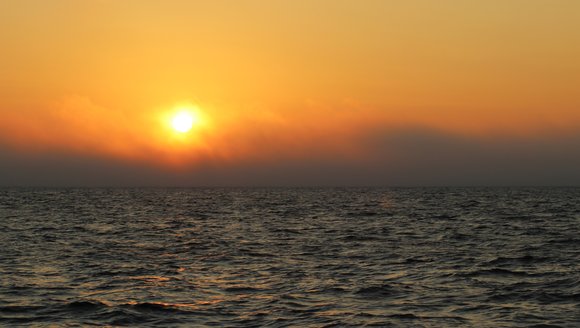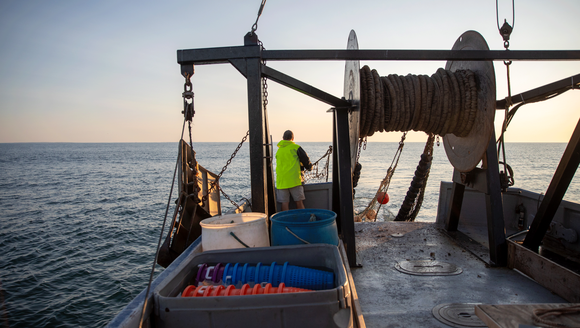Ocean Gliders
Observing the ocean with uncrewed autonomous underwater vehicles.
Ocean gliders are uncrewed autonomous subsurface vehicles that can dive underwater to controlled locations and depths and collect critical data. We will use underwater gliders for observations of biophysical processes in the Gulf of Maine and beyond.
Project Goals:
- Contribute to long-term monitoring of the marine environment and quantify subsurface warming in the Gulf of Maine.
- Monitor zooplankton abundance and body condition in the Gulf of Maine.
- Detect the presence of large pelagic organisms in the Gulf of Maine, using both passive acoustic monitoring (for cetaceans) and acoustic detection of tagged individuals.
Ocean gliders can dive underwater to controlled locations and depths and collect critical data. Driven by a buoyancy pump, they glide through the water column by repeating sawtooth vertical profiles, moving both horizontally and vertically. Because of this highly energy-efficient propulsion mode, ocean glider missions are long-ranged and durable, making gliders ideally suited for subsurface sampling at a local or regional scale.

The small relative cost (compared to research vessels) and the ability to operate multiple vehicles with minimal personnel, infrastructure, and oversight enables researchers to study and map the spatio-temporal dynamic features of the ocean around the clock. In addition, gliders offer the opportunity to sample the water in adverse conditions, such as very cold environments or rough seas. Gliders would enable us to perform research in the Gulf of Maine during wintertime, when adverse conditions prevent conventional methods that require the physical presence of researchers to acquire valuable data offshore.
The ability to sample subsurface features will enable us to tackle important topics for the Gulf of Maine Ecosystem that we have not been able to fully address yet:
- Subsurface warming rates compared to surface warming.
- The impact of warming on ocean bottom organisms (such as lobsters).
- The presence of thermal refuges in the Gulf of Maine.
- The abundance, distribution, and body condition of zooplankton in the Gulf of Maine, which are all critical components for the health of the higher trophic levels of the ecosystem.
Project team:
Read next
-
Meet Redwing, the torpedo-shaped robot testing the limits of ocean observation - The Boston Globe
An autonomous ocean robot, launched from Woods Hole, is attempting to complete a first-ever trip around the world.
Press Clips
-
The Next Wave of Maine’s Blue Economy
Reflections from the 2025 Blue Economy Investment Summit, and the future of Maine's blue economy.
Perspectives
-
Demystifying the Blue Economy
The blue economy is a hot topic these days, but the meaning behind the term isn't always clear. In this blog, we break down what …
Perspectives
-
Fisheries 101
Fisheries are the backbone of our state's economy and cultural heritage, but these systems are complex, and managing them even more so. Read on for …
Perspectives



